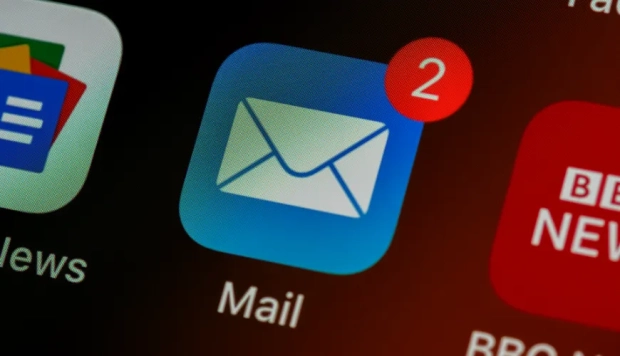6 Mobile‑App Features You’re Probably Overlooking (That Keep Users Coming Back)

We live on our phones. From ordering lunch to tracking workouts, the best apps feel effortless because they anticipate what we need before we even ask. But too often, developers chase flashy features while overlooking the basics that make or break a user's experience. A clunky sign-up process or a frustrating password reset is all it takes for someone to delete your app in seconds.
What keeps users coming back isn't a gimmick; it's an app that feels polished, intuitive, and reliable. In fast-growing tech hubs like Brisbane, Australia, where app design trends are shaping global standards, developers are paying closer attention to these small but critical details. In this article, we'll explore six often-overlooked features that can quietly transform any app, whether you're building a wellness tracker, a marketplace, or something entirely new.
1. Friction‑free onboarding
Onboarding is often where apps win or lose users. Studies show that over 70% of users abandon an app within a week if their first experience feels confusing or time-consuming. That's why top-performing apps focus on micro-details:
-
Clear data permissions upfront so users feel safe
-
Progressive sign-in that lets people explore before committing
-
Auto-fill, biometric login, and instant verification to minimise friction
Getting these elements right isn't just about aesthetics and psychology. Users decide in seconds whether your product feels trustworthy. Experienced App Developers in Brisbane often approach onboarding like a conversion funnel, combining user research with iterative design to cut unnecessary taps and simplify every step. The result? Higher activation rates, stronger retention, and fewer uninstalls.
2. Offline Functionality and Thoughtful Syncing
A truly great app feels reliable even when your signal isn't. Offline support isn't just a nice-to-have; it's an expectation. Users want to draft an email on a plane, check a saved map while hiking, or open a past order history without hitting a "no internet” error. Thoughtful syncing systems ensure that all data updates seamlessly the moment a connection is restored.
Smart apps go beyond basic caching: they show clear sync status, let users trigger manual refreshes, and handle conflicts gracefully (no one likes losing work). This feature is critical for industries like travel, logistics, and healthcare, where downtime isn't an option. An app that "just works” offline quickly earns user trust, and keeps it.
3. Personalised Content Without Being Creepy
People love apps that feel like they "get” them, but cross the line, and it feels invasive. The best personalization feels like a helping hand, not surveillance. Instead of over-collecting data, use behavioural signals:
-
Suggest products based on browsing history
-
Surface relevant articles based on time of day or location
-
Let users customise their dashboard so they're in control
A 2024 report revealed that 71% of consumers expect personalized interactions from brands, and a striking 76% say they get frustrated when personalization is missing. Earlier data shows that 83% of consumers are willing to share their data for a personalized experience if transparency and control come first. This is why apps like Spotify and Netflix thrive; they blend AI-powered recommendations with user-driven preferences, striking that perfect balance between convenience and trust.
4. Micro-Interactions That Respect Time
Tiny design details often make or break user satisfaction. Micro-interactions, like a subtle vibration when you tap "Pay” or a quick animation confirming an item is added to your cart, signal progress and create delight. But when overdone, they slow people down.
The secret is restraint. Aim for animations under 300 milliseconds and use haptics only to confirm essential actions. These subtle cues reassure users that their taps "worked” while maintaining speed. This is why apps like Instagram feel so polished; they've mastered those invisible touches that make navigation seamless without being flashy.
Time America Watch shows how lean animations and instant, sub-300 ms feedback keep time-sensitive tasks snappy and trustworthy.
5. Transparent Feedback Loops
Users want to feel heard. Even a simple "Thanks for your feedback!” pop-up can make them feel valued. Strong feedback loops include:
-
In-app surveys or emoji-based ratings for quick input
-
Visible roadmaps showing which suggestions are in progress
-
Release notes that clearly call out community-driven updates
When users see their input shaping your product, engagement spikes, treat feedback as a conversation, not a one-way street, and your app will feel more like a service than a tool.
6. Responsible Push Notifications
Notifications are a double-edged sword: done well, they re-engage users; done poorly, they get silenced or worse, lead to uninstalls. The smartest apps give users granular control: choose what's worth a ping, group notifications intelligently, and time them to match behaviour (no 3 AM alerts!).
A clever example: Duolingo uses daily streak notifications, but only after sensing a user's active hours, making reminders feel like encouragement rather than nagging. Treat notifications like a tap on the shoulder, not a shout across the room. Respecting user time keeps your app relevant without being irritating.
Conclusion
Many of the features that elevate an app aren't flashy, yet they make all the difference. From friction‑free onboarding and offline support to personalisation that respects privacy, these thoughtful touches build trust and loyalty. They also reflect a broader trend: users expect technology to adapt to them, not the other way around. Whether you're creating a journaling tool or the next big marketplace, focusing on the fundamentals will set you apart and encourage people to keep tapping.



